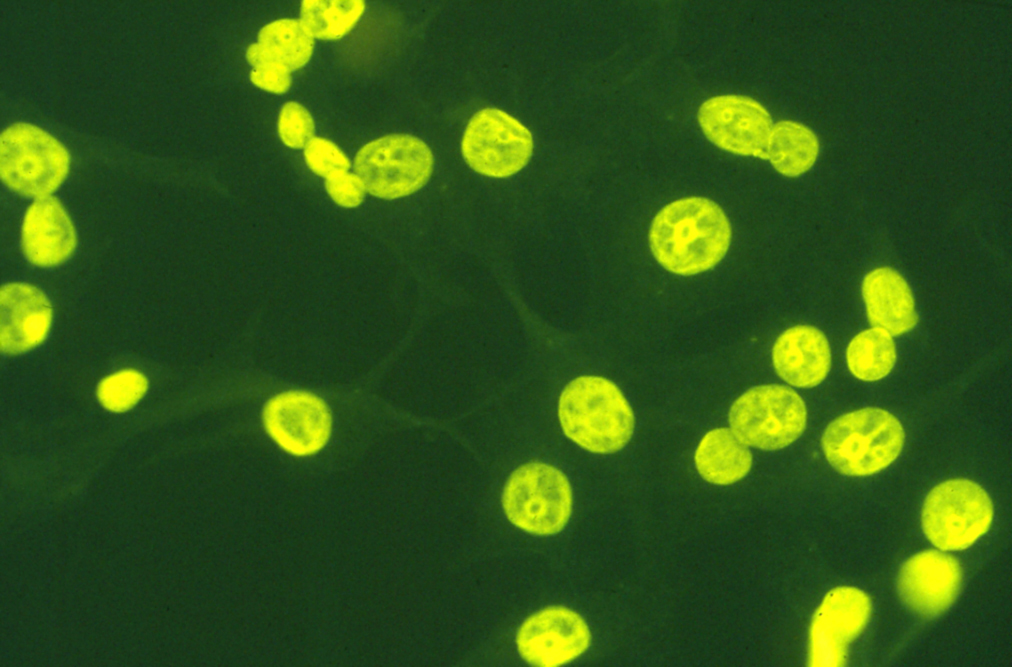 |
|
| Indirect immunofluorescence of ANA (homogeneous pattern) | |
Allergy & Autoimmune Testing
Allergy testing
The Stanford laboratory can look for IgE antibody against a large number of allergens. But we have created a number of screening panels for ordering convenience.
The “Air-Carried House & Outdoor Option” (ACHOO) includes 16 airborne allergens, including the common outdoor pollen allergens, molds, and indoor allergens such as cockroach, dog and cat dander, and dust mites.
The “Ingested Things Causing Hives” (ITCH) panel includes all of the common food allergens causing problems in both children and adults. Both of these panels also include total IgE which, if elevated, can help suggest that low or moderately elevated specific IgE levels may be significant. There are also specific panels for bird allergy, mold allergy, insect venom, penicillin, chemical allergy and commonly requested groups of food allergens.
We would be happy to discuss your specific needs (and customize a panel for your practice).
Anti-nuclear antibody
We recently began screening for ANA using an enzyme immunoassay (“ELISA”) method in which a variety of individual nuclear antigens are placed on a solid-phase as targets for the patient's specimen.
However, we are not abandoning indirect immunofluorescence. Specimens positive in the ELISA screen are still examined this way for verification and quantitation. At Stanford, a device in our fluorescent microscope allows us to add neutral density filters in small increments to quantify the brightness of the fluorescence and, using calibrators, determine the ANA “titer” without the additional labor of traditional serial dilution. Furthermore, this approach standardizes the procedure. Indirect immunofluorescence is very subjective and visual determination of the degree of “brightness” (and, hence, the titer of ANA) is subject to significant inter-individual variation. The quantitative approach used at Stanford insures that titers reported over time will be more reproducible when following individual patients.

